#hire vr developers
Explore tagged Tumblr posts
Text
Looking to hire skilled Virtual Reality (VR) app developers? Discover the top 7 websites that connect you with experienced VR professionals. Whether you're building immersive VR games, training simulations, or business applications, these platforms offer the best talent for your project.
0 notes
Text
Hire Unity 3D Developers: Best Guide to Building Immersive, Interactive Experiences
In the current digital paradigm, Unity 3D emerged as one of the most popular platforms for building these immersive experiences. If it is an AR app, a VR simulation, or perhaps a mobile game, hiring Unity 3D developers would be in demand to bring your vision to life. This blog is going to be informative for you as to why you must hire Unity3D developers, what you are looking for, where you will find it, and how they will transform and give life to your project.

Why Hire Unity 3D Developers?
One of the flexible and powerful game development tools with the spectacular capability for creating amazing visual experiences over multiple platforms is Unity 3D. In other words, here's why hiring a Unity 3D developer is critical for your project:
1. Cross-Platform Development
One can develop games and applications deployable on all possible platforms with Unity 3D, be it for mobile devices, be it for iOS or Android; PCs; consoles; or even AR/VR-based devices. And so, there is a good developer to ensure the efficient running of your game and application on different platforms to reach maximum target audiences.
2. Developing incredible AR/VR Experiences
Whether you have a project that you want to create as an augmented reality application or as a virtual reality, you want to have Unity 3D on your side. The developers working on Unity are given tools for developing an immersive and interactive simulation that engages the audience and leaves behind unforgettable experiences. For games, training, or educational purposes, it is the leading platform for AR/VR development.
3. High-quality development
Unity 3D developers specialize in game mechanics, physics, animation, and optimization. They have the expertise to develop both interesting mobile games and complex console-quality experiences in complex multiplayer or any other type of game to captivate players, ensuring smooth performance across devices.
4. Real-Time Rendering
The same real-time rendering powers that are allowing for incredible fidelity and accuracy in Unity 3D's animations and settings can be great benefits in the same businesses, for instance, in real estate, architecture, automobiles, and healthcare, where real-time 3D visualizations have a big impact on the user experience and decision-making.
5. Rapid Prototyping
With Unity, prototype development can be done in quite a quick manner. They allow developers to come up with a prototype in almost an instant and test it, allowing ideas to be fine-tuned before full-scale development. This would lessen the risks involved with pricey changes later on and hasten the entire process of development.
Key skills to look for when hiring Unity 3D developers
It makes sense to judge the technical level and professionalism of his hire as a Unity 3D developer. Here are the crucially important skills to take into consideration:
1. Experience in C#
Programmers use C# primarily for scripting Unity 3D games. A skilled person in C# can more efficiently implement game mechanisms, specify certain functionalities according to the game, and make sure that all code is optimized as to performance.
2. Proficiency in 3D Modeling & Animation
Though Unity developers are in close collaboration with designers, knowing 3D modeling and animation tools like Blender or Maya helps them integrate visual stuff to the project much more effectively. They make sure the animations are smooth with nice visual effects.
3. Deep knowledge of game physics
Game physics is an important aspect of Unity 3D game development. The developer using Unity will be able to emulate more realistic movements, collisions, and acts with this physics engine. This would enable users to get the best experience while working on the system.
4. Problem-Solving & Debugging Skills
The Unity 3D developer should have excellent problem-solving skills because during the development process, he has to resolve so many debugging problems. He must be able to identify the most efficient solution regarding performance optimization and bug fixing for a superb user experience.
5. AR/VR Development Tools KNOWLEDGE
For AR/VR-based applications, you may involve developers with actual hands-on experience in ARKit, ARCore, Oculus, or HTC Vive. Their experience will assure you that your AR/VR application will be really interactive and responds very well on all the devices.
Where to Find Unity 3D Developers?
Know the best places to find good Unity 3D developers. Here are the best places and how to locate them.
1. Freelance Sites
There is a high pool of Unity freelance developers on sites such as Upwork, Freelancer, and Fiverr. Look at their profiles, read the reviews, and choose one by expertise and portfolio.
2. Companies Specializing in Unity Development
If you need a more extensive service, Unity development companies such as AIS Technolabs shall be available at your beck and call. They would provide you with an experienced team of Unity developers for your project. And they will execute your project on an end-to-end basis—from ideation to the final deployment process.
3. Job Boards & Professional Networks
Sites like LinkedIn, Indeed, and Glassdoor are very great places to search for developers who know Unity, and you can post a job or directly search candidates by relevant experience.
4. Unity Community Forums
Unity has a vibrant community created for developers to share work, ask questions, collaborate on projects, and much more. Your participation in Unity forums or corresponding forums on Reddit will definitely help you reach skilled developers enthusiastic about what they do.
Steps in Hiring the Ideal Unity 3D Developer
To hire a good Unity developer for your project, you should follow all the easy steps outlined below.
1. Define Your Project Scope
Do your requirements for a project, which might include the kind of experience you want to create, whether it is a mobile game, VR simulation, or any other platform that you would like your application to be present on, as well as features that you want to include in it. It will help you to present your vision to all the developers you are contacting.
2. Evaluate the developer portfolios against the work done in the past.
Check if there are projects that resonate with your vision or ideas and need similar skills. These could be AR/VR development, real-time rendering, or multiplayer game mechanics.
3. Interviews
Interview the shortlisted candidates to assess their technical abilities and problem-solving skills. Questions about their experience with Unity tools, scripting, and performance optimization are a good idea.
4. First, a Small Project
But don't commit to a big project before you test them on a small task, prototype, or any other small project for which you could base your judgment of the skills of the developer, communication, and delivery quality.
5. Clear Expectations
Set clear timelines, milestones, and expectations right from the start point. Consistent communication is an important aspect to ensure that a project follows the set course and is in line with your goals.
Conclusion: Why Unity 3D Developers are Vital for Your Project's Success
It is mainly dependent on the Unity 3D developers hired that would be able to create high-quality interactive applications for the attraction of users. Areas can include game development, VR simulation, or even application development in AR; and for the latter, the Unity developers would give technical expertise to ensure its performance optimizations and immersion and experience with cross-platform compatibility.
Agencies like AIS Technolabs provide you with highly experienced Unity 3D developers who can respond to specific project requirements. You will be investing in the right Unity developer, which will ensure you unlock your application's full potential and lay a foundation for long-term success.
View source link:
#hire developers#hire#developer#india#usa#canada#hire vr developers#virtual reality#hire unity 3d developer#unity#unity3d#gaming news
0 notes
Text
The Future of AR/VR Development Services: Trends and Innovations

In a world increasingly driven by immersive experiences, Augmented Reality (AR) and Virtual Reality (VR) have emerged as transformative technologies shaping the way we interact with the digital realm. As we venture into the future, the landscape of AR/VR development services is poised for remarkable evolution. Let's explore some key trends and innovations that are set to redefine the immersive tech landscape.
Integration with AI and Machine Learning: One of the most exciting developments in AR/VR is the seamless integration with Artificial Intelligence (AI) and Machine Learning (ML). This synergy enhances the realism and intelligence of virtual environments, creating more immersive and interactive experiences. From intelligent character behavior to dynamic content generation, the marriage of AR/VR and AI/ML is set to redefine the boundaries of digital experiences.
Spatial Computing Breakthroughs: Spatial computing, which enables devices to understand and interact with the physical world, is reaching new heights. Advancements in spatial mapping and recognition technologies are making it possible for AR/VR applications to respond intelligently to real-world surroundings. This has profound implications for industries like gaming, healthcare, and education, where contextual awareness can significantly enhance user engagement.
5G Connectivity for Enhanced Performance: The rollout of 5G networks is a game-changer for AR/VR development. The increased speed and reduced latency offered by 5G connectivity enable smoother, more responsive experiences. This is especially crucial for applications that demand real-time interactions, such as AR gaming and virtual collaboration tools.
WebAR and WebVR for Accessibility: The democratization of AR/VR experiences is gaining momentum through the adoption of WebAR and WebVR technologies. These browser-based solutions eliminate the need for users to download dedicated applications, making immersive experiences more accessible. This trend is particularly beneficial for businesses looking to reach a broader audience without the barriers of app installations.
Conclusion: As we peer into the future of AR/VR Development Services, the landscape appears dynamic and full of potential. The convergence of AR/VR with AI, the evolution of spatial computing, the impact of 5G connectivity, the accessibility afforded by WebAR/WebVR, and the growing role of immersive solutions in enterprise settings collectively paint a picture of a technology-driven future where the boundaries between the digital and physical worlds continue to blur. Panoramic Infotech specializes in cutting-edge AR/VR development services, offering innovative solutions that seamlessly blend the virtual and real worlds.
0 notes
Text
Hire VR Game Developers - Gamecrio Studio
Embark on an exhilarating journey through virtual reality with Gamecrio’s seasoned VR Game Developers. Our team specializes in crafting immersive and unforgettable experiences that push the boundaries of reality and imagination. From breathtaking environments to interactive gameplay mechanics, we’re dedicated to bringing your VR gaming visions to life with creativity and precision.
2 notes
·
View notes
Text
Get ready for the next level of rummy! Rummy games have evolved significantly in recent years, becoming faster, politely interactive, and offering users various gameplay modes. Developers continue to innovate, adding new features and improving existing systems. In 2025, cutting-edge technologies are set to redefine how you play. Here’s how AI, ML, Blockchain, and AR/VR are transforming the rummy experience:

AI & ML for Smarter Play: AI-driven strategies and machine learning algorithms will offer personalized gameplay, tips, and enhanced difficulty levels, improving player skills and experience.
Blockchain for Secure and Transparent Transactions: Blockchain ensures secure, transparent, and tamper-proof records, making rummy platforms fairer and more trustworthy with decentralized technology.
AR/VR for Immersive Experiences: Augmented and Virtual Reality will create interactive, 3D gaming environments, allowing you to play rummy at virtual tables with real players, offering an incredibly immersive experience.
Real-time Analytics: AI and ML will provide instant game feedback, behavioral analysis, and strategic insights to help you improve your gameplay on the fly.
The future of rummy is here! Join the revolution and experience the future of rummy gaming in 2025. KPIS Pvt. Ltd. is a leading company in the Rummy game development industry, offering various game development services. By leveraging the power of AI, ML, Blockchain, and AR/VR, we can deliver world-class Rummy gaming experiences that are immersive, secure, and fun. With us, you can bring these futuristic features to your Rummy game, offering players an experience they will never forget.
#technology#game development company#game development#internet of things#web development#artificial intelligence#rummy game development#app development#application development#iot#online rummy game#rummy game#rummy app#rummy#rummy game developers#hire ai developer#hire mobile app developers#hire developers#hire game developers#hire me#blockchain development company#blockchain technology#ar game development#vr development#vr games#virtual reality
0 notes
Text
#VR game development#Virtual reality games#VR developers for hire#Immersive gaming solutions#Unity VR development#Oculus Rift game development#Multiplayer VR games#WebVR game development#VR game design and animation
0 notes
Text
Comprehensive VR Game Optimization Guide Using Unity3D
The adoption of Virtual Reality has brought about another major shift in the world of gaming, allowing players to enjoy rich, interactive games. However, such immersive experiences create a unique set of challenges, such as the need for sustained high performance and implicit smooth gameplay. Unlike classic gaming, VR requires consistent frame rates-72 FPS for Quest 2 or 90 FPS for any other…
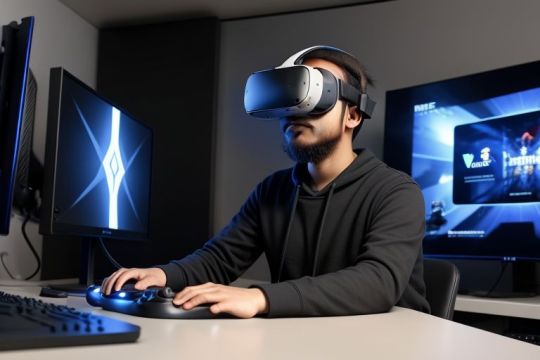
View On WordPress
#blockchain-development#game-development#hire unity game developers#mobile-game-development#unity3d developers#unity3d game development companies#video-games#virtual reality developers#vr app development
1 note
·
View note
Text
A Beginner’s Guide to AR/VR Game Development
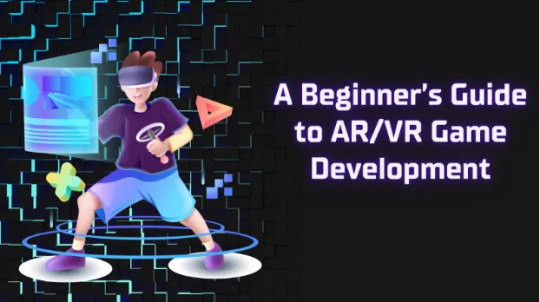
Dive into the world of AR/VR game development and create immersive gaming experiences! Start by selecting the right platform, like ARKit, ARCore, or Oculus, based on your audience and expertise. Learn game design fundamentals using tools like Unity or Unreal Engine and master AR/VR SDKs for depth perception, spatial awareness, and interactivity. Build engaging prototypes, optimize performance, and prioritize user comfort. Once your game is complete, publish it on platforms like the App Store or Oculus Store and promote it effectively. Collaborate with experts like Devstree Studio, a leading game development company in India, to bring your vision to life!
#game development#game developers#ar vr technology#augmented reality#virtual reality#ar game development#vr game development#game dev#hire dedicated development team#unity game development
0 notes
Text
Hire AR VR Developer
In a world where technology is advancing at a breakneck pace, immersive technologies such as Augmented Reality (AR) and Virtual Reality (VR) are making significant strides in changing the way we perceive and interact with digital media. With limitless potential for enhancing user experiences from gaming to education, now is the time to hire AR VR developers and position your business at the forefront of innovation.If you're looking to create cutting-edge AR and VR applications, you need the right talent. At ViitorCloud, we offer highly skilled AR/VR developers who can bring your vision to life.
0 notes
Text

What to Look for When Hiring Android App Developers | AIS Technolabs
Discover the key qualifications and skills to seek in Android app developers. Make informed hiring decisions with our essential guide
#Android Development#Hiring Android Developers#Java vs Kotlin#Mobile App Development#Tech Stack#Android SDK#App Security#Cross-Platform Development#AI and Machine Learning#IoT Integration#5G Technology#AR and VR#Developer Skills#Project Management#App Development Trends
0 notes
Text
AR/VR-Based Solutions Edmonton - Umano Logic
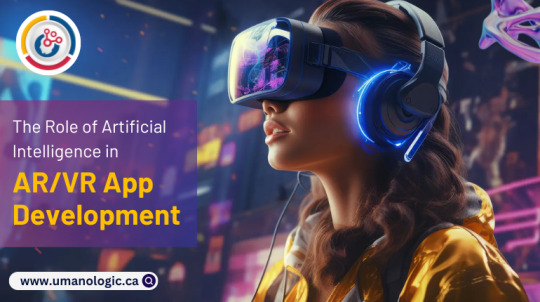
Umano Logic specializes in Augmented Reality App Development Edmonton, serving diverse industries such as gaming, healthcare, and more. For more information: https://umanologic.ca/ar-vr-technologies/
#AR/ VR App Development company Edmonton#Hire Augmented Reality Developer Edmonton#AR VR developer#Augmented Reality App Development
0 notes
Text

Top Benefits of Hiring Expert Unity 3D Developers for Immersive Projects
#hire developers#hire#developer#india#usa#canada#virtual reality#hire vr developers#hire unity 3d developer#unity#unity3d
1 note
·
View note
Text

Panoramic Infotech specializes in cutting-edge Augmented Reality app development, seamlessly blending digital experiences with the real world.
For more information:- https://www.panoramicinfotech.com/ar-vr-development/
0 notes
Text
Top AR/VR Development Tools to Boost Your Projects in 2024

The future is immersive. As we step into 2024, the fields of augmented reality (AR) and virtual reality (VR) are shifting how we interact with technology and the world around us. Whether you’re a real developer or just taking a chance in this exciting field, the right tools can make all the difference in bringing your creative visions to life. Here’s a look at some of the top AR and VR development tools that will increase your projects this year.
1. Unity: The Powerhouse of Immersive Experiences
Unity is a great tool for creating impressive 3D content. It works well for both AR and VR development, making it a favorite among developers. Unity offers a wide range of assets and tutorials, which means even beginners can create exciting experiences. Its ability to work on multiple platforms ensures that your projects can reach a large audience.
Why Use Unity?: User-friendly interface, extensive community support, and powerful tools for 2D, 3D, AR, and VR development.
2. Unreal Engine: Next-Level Realism
If you need top-quality graphics and just a few settings, Unreal Engine is a great choice. It’s well-known for creating games with amazing images and is also excellent for VR and AR. Unreal Engine offers real-time execution and a visual scripting system, which lets you quickly create detailed projects without needing a lot of programming skills.
Key Features: real-time rendering, clearly flexible visuals, and a node-based scripting system.
3. Vuforia: Augmented Reality Simplified
For those focusing on augmented reality, Vuforia offers a robust and accessible platform. It’s particularly effective for creating AR applications that rely on image approval and object tracking. Vuforia’s SDK integrates smoothly with Unity, allowing developers to create complex AR experiences without a steep learning curve.
Benefits: ease of use, excellent image recognition, and support for various AR devices.
4. ARKit and ARCore: Mobile AR Leaders
Apple’s ARKit and Google’s ARCore are at the forefront of mobile AR development. These tools leverage the advanced hardware and software capabilities of modern smartphones to create seamless and immersive AR experiences. ARKit offers outstanding integration with iOS devices, while ARCore brings similar capabilities to Android, making them essential for mobile AR projects.
Highlights: advanced motion tracking, environment understanding, and light estimation.
5. Blender: The Free and Open-Source 3D Creator
The Blender program is a free, powerful tool for creating 3D designs, ideal for developers on a budget. It supports modeling, sculpting, animation, and rendering. For AR and VR, Blender's features make it easy to create detailed 3D models and environments that you can import into Unity or Unreal Engine.
Why choose Blender?: It’s free, open-source, and offers a careful set of tools for 3D creation.
6. Microsoft HoloLens: Cutting-Edge Mixed Reality
For developers interested in mixed reality, Microsoft’s HoloLens offers a glimpse into the future. This tool combines the physical and digital worlds, enabling the creation of holographic experiences that are both interactive and immersive. HoloLens development leverages Unity, making it easier to transition from other 3D or VR projects.
Advantages: integration with Unity, advanced holographic processing, and a growing ecosystem of applications.
7. Oculus SDK: Immersive VR at Your Fingertips
Oculus has been a developer in the VR space, and its SDK provides a thorough suite of tools for developing VR applications. With support for both Oculus Rift and Quest, the Oculus SDK helps you create high-quality, immersive experiences that can transport users to entirely new worlds.
Notable Features: VR motion controls, spatial audio, and extensive documentation and support.
8. ARFoundation: Unified AR Development
If you're developing for both iOS and Android, AR Foundation provides a single framework. It lets you create AR apps that work with both ARKit and ARCore without needing separate workflows. This tool saves time and effort while ensuring a consistent experience on all devices.
Perks: cross-platform support, streamlined development process, and integration with Unity.
Conclusion
As AR and VR technologies continue to advance, the tools available to developers are becoming more powerful and available. Whether you're looking to create a simple AR app or a complex VR simulation, the right development tool can make all the difference. For an AR/VR development company like Xceltec, using AR Foundation provides a streamlined approach for cross-platform AR development.
By leveraging these tools, you can stay at the forefront of the involved technology wave in 2024, creating engaging and innovative experiences that captivate users and pushing the limits of what’s possible.
0 notes
Text

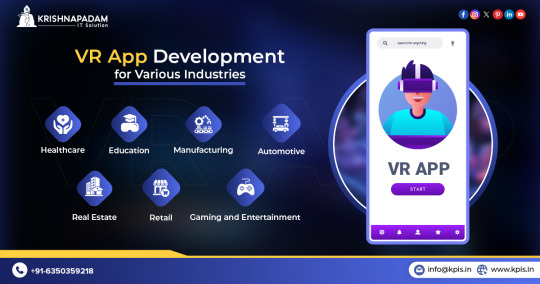
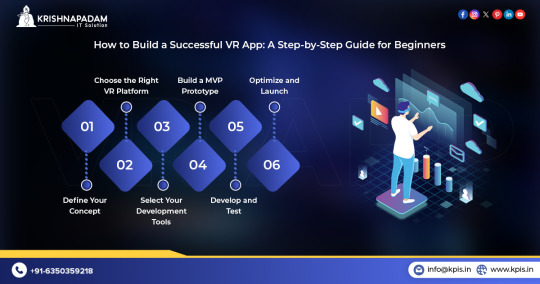


Whether you’re a beginner or an experienced developer, understanding the evolving landscape of VR technology will be crucial in crafting successful, engaging VR applications in 2025 and beyond. At KPIS, our team of experienced VR app developers and analysts integrate VR technology into your business after closely analyzing your industry, competitors, and target audience.
Have queries or want to know more about our virtual reality app development services or Trending Trends and Technologies of Virtual Reality (VR) App Development in 2025? Partner with us to bring your brand’s interactions to life and enjoy incredible success in the digital space.
#VR#virtual reality#VRMobileApp#VRApp#AppDevelopment#web development#app development#game development company#technology#internet of things#artificial intelligence#game development#application development#Hire App Developers#Software Development
0 notes
Link
In the ever-evolving landscape of e-commerce, the quest for an unparalleled shopping experience has become the driving force behind the success of online businesses. As consumers increasingly demand more interactive and immersive interactions with products before making a purchase, the integration of cutting-edge technologies becomes imperative. This is where Augmented Reality (AR) and Virtual Reality
#shopifyinnovation#ar and vr#future of ecommerce#immersiveshopping#techrevolution#shopifymagic#hire developers#shopify store#shopifytips
0 notes